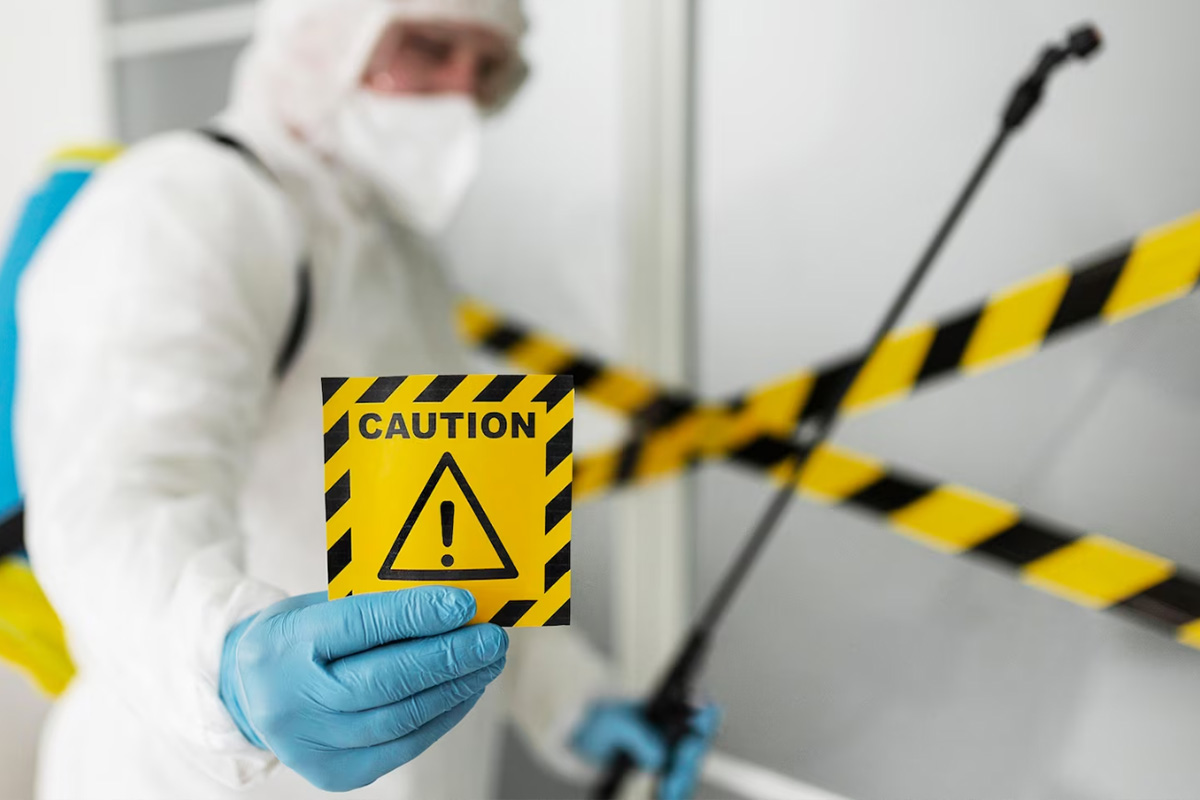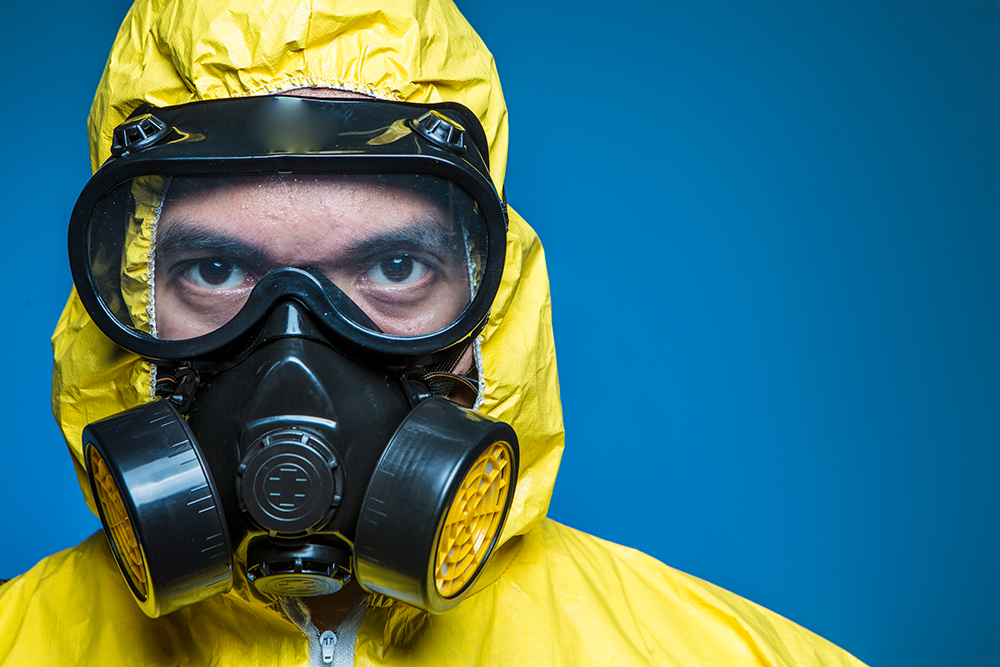Clandestine Lab Cleanup: Comprehensive Purification for Hazardous Sites
Clandestine Lab Cleanup: Comprehensive Purification for Hazardous Sites
Blog Article
Specialist Biohazard Cleaning and Purification for Blood, Bodily Fluids, and Hazardous Products
In the world of biohazard cleaning and decontamination for blood, bodily fluids, and unsafe materials, accuracy and knowledge are vital. The prospective health risks connected with direct exposure to biohazards emphasize the important demand for careful handling and complete clean-up. Specialized training gears up professionals with the knowledge and abilities essential to resolve these unsafe scenarios effectively. Nonetheless, it is not just regarding cleaning up; the importance of employing proper decontamination techniques can not be overstated. As we browse the complex landscape of biohazard clean-up, comprehending the nuances of policies, compliance, and the customized equipment at play becomes crucial in making sure a risk-free and complete purification process.
Health And Wellness Risks of Biohazard Exposure
Direct exposure to biohazards positions substantial health dangers that can result in serious effects for neighborhoods and people alike. Biohazards encompass a variety of organic substances, including blood, physical fluids, mold, microorganisms, infections, and various other potentially contagious materials. When people enter into call with these biohazards, whether through mishaps, inappropriate handling, or environmental exposure, they deal with the threat of contracting major health problems or conditions.
Among the key health risks connected with biohazard direct exposure is the transmission of transmittable diseases. Bloodborne virus such as HIV, liver disease B and C, and numerous bacteria can be present in biohazardous products, posturing a straight hazard to human wellness. Inhaling airborne biohazards like mold spores or coming into contact with contaminated surfaces can also result in breathing problems, allergies, and various other negative wellness results.
Furthermore, biohazard exposure can have long-lasting health and wellness ramifications, with some diseases manifesting years after the initial contact (Blood Cleanup). For that reason, it is vital to prioritize appropriate biohazard cleaning and decontamination to minimize these wellness dangers and make sure the security of areas and people

Specialized Training for Biohazard Cleaning
When it involves dealing with biohazard cleaning efficiently and securely, specialized training plays a fundamental function in ensuring appropriate purification procedures are complied with. Biohazard cleanup needs details knowledge and abilities to effectively alleviate threats related to bloodborne microorganisms, physical fluids, and harmful products. Professionals trained in biohazard clean-up undertake strenuous instruction on exactly how to securely take care of, eliminate, and deal with biohazardous materials to stop contamination and direct exposure.
Specialized training for biohazard cleaning covers a series of important topics, including appropriate individual safety devices (PPE) use, bloodborne pathogen understanding, decontamination techniques, and contaminated materials disposal procedures. People educated in biohazard clean-up are geared up with the essential know-how to analyze contamination levels, determine potential dangers, and implement suitable cleaning treatments in conformity with governing requirements.
Continual training and education and learning are vital in the area of biohazard clean-up to remain updated on the current decontamination modern technologies, security protocols, and guidelines. By investing in specialized training, biohazard cleanup specialists can effectively reply to emergency clean-up circumstances and protect both public health and the setting.
Relevance of Appropriate Decontamination Strategies
Using proper purification methods is essential in biohazard cleaning to successfully get rid of hazardous products and reduce health threats. Effective purification not only makes certain the removal of visible traces of blood, physical fluids, and various other biohazards however also targets undetectable pathogens that might position serious health and click to read wellness risks otherwise appropriately eradicated. By adhering to rigid decontamination protocols, educated professionals can dramatically decrease the threat of exposure to dangerous bacteria, viruses, and germs that can cause conditions or infections.
Appropriate purification methods entail using specific equipment and anti-bacterials that are specifically created to neutralize biohazards successfully. Comprehensive cleansing and disinfection of infected locations are vital to protect against the spread of pathogens and make certain a safe atmosphere for owners. Additionally, the proper disposal of biohazardous waste following purification procedures is essential in protecting against contamination of other surface areas or individuals.

Equipment and Tools for Safe Clean-up
When dealing with blood, bodily fluids, or unsafe materials, biohazard cleansing professionals count on specialized gear to lessen exposure risks and extensively decontaminate the afflicted location. Additionally, biohazard cleaning packages including anti-bacterials, absorbing materials, and biohazard bags are utilized to securely get rid of and contain of polluted things.
Advanced cleansing tools like hospital-grade disinfectants, HEPA-filtered vacuum cleaners, and misting devices are utilized to disinfect surfaces and eliminate biohazards properly. Specialized equipment such as sharps containers Our site and biohazard garbage disposal containers are utilized to safely handle sharp items and biohazardous waste products. By making use of the right devices and devices, biohazard cleansing professionals can guarantee a thorough clean-up procedure that focuses on safety and security and minimizes health dangers for both workers and owners of the affected space.
Regulations and Compliance in Biohazard Cleaning
Correct adherence to laws and compliance requirements is extremely important in biohazard cleaning to guarantee the security of both workers and the setting. Government agencies such as OSHA (Occupational Safety and Health Management) and the EPA (Epa) have established particular guidelines for biohazard cleaning treatments to minimize health and wellness threats and environmental contamination. These laws cover a range of elements consisting of the handling, transport, and disposal of biohazardous materials, in addition to the essential training and safety devices needed for personnel involved in the clean-up process.
Biohazard cleansing firms must remain current with these laws to guarantee that their operations fulfill the required security standards. Failure to conform with these laws can visit this page cause serious effects, consisting of fines, legal action, and endangering the health of individuals and the environment. By complying with stringent laws and conformity procedures, biohazard cleansing firms can effectively reduce risks and guarantee a complete and safe cleaning procedure for all events entailed.
Verdict
To conclude, biohazard cleaning and decontamination need specialized training, proper methods, and adherence to guidelines. Exposure to blood, bodily liquids, and unsafe products positions substantial health dangers, making it essential to make use of the right tools and tools for risk-free cleanup. By complying with rigorous protocols and standards, professionals can successfully reduce the threats related to biohazard direct exposure and guarantee the safety and security of both themselves and others.
As we navigate the intricate landscape of biohazard cleanup, recognizing the nuances of guidelines, conformity, and the specific equipment at play ends up being necessary in making sure a comprehensive and risk-free purification procedure. (Blood Cleanup)
When it comes to handling biohazard cleanup efficiently and safely, specialized training plays a fundamental function in making sure appropriate purification treatments are adhered to.Making use of proper decontamination methods is critical in biohazard cleaning to effectively lessen and get rid of unsafe products health risks. Additionally, biohazard cleaning packages containing anti-bacterials, absorptive materials, and biohazard bags are used to safely get rid of and include of infected things.
Federal government companies such as OSHA (Occupational Safety and Wellness Management) and the EPA (Environmental Security Agency) have actually developed certain standards for biohazard cleaning treatments to reduce health threats and environmental contamination.
Report this page